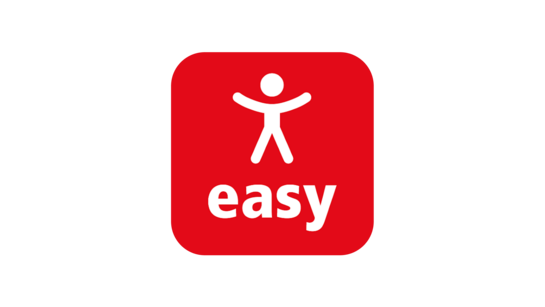Accessible travel
Passengers with mobility or visual impairments and people travelling with heavy luggage or strollers can take advantage of VBB's many accessible travel offers.
For example, VBB offers assistance at complicated transfer points and in the public transport vehicles that enable accessible travel. If you have a disabled person's pass with a valid token, for example, you can travel free of charge. If you have the "B" disability symbol, you can also take an accompanying person with you free of charge.
In addition to taking defective lifts into account in route planning and offering the VBB assistance service, VBB has optimised its Bus&Bahn app for blind or visually impaired passengers. With the help of accessible pedestrian navigation and detailed route information (turn-by-turn directions), you can be routed from door to door using any means of transport.
Barrier-free travelling
The state of Brandenburg and the inner districts of Berlin have a very well-developed public transport network. It includes regional trains, underground trains, suburban trains, trams, buses and ferries. Many of the stops and stations are already accessible. You can search for accessible or partially accessible connections using the Journey Information from VBB, Berlin’s and Brandenburg’s public transport authority. This also takes into account whether a lift at one of the stations may be defective. We will show you here how to find this out in the connection search.
Regional rail transport
Regional trains are generally equipped with ramps that are operated by the train crew. These ramps are usually located in the centre of the trains. If you require assistance getting on and off the train, you must notify the railway company concerned in advance.
Suburban trains (S-Bahn)
Most S-Bahn stations have a guidance system for the blind and acoustic announcements. Passengers who need a ramp to get on and off the train will receive assistance from the train driver. Please position yourself at the front end of the platform in the direction of travel. The driver will then get out and put the ramp in place.
Underground trains (U-Bahn)
There are various underground train types in Berlin. Not all of them are accessible. If you require assistance getting on and off the train, please position yourself at the front end of the platform in the direction of travel. The driver will then get out and put the ramp in place where necessary. Modern trains have a low-floor entrance, but depending on the station there may be a larger gap between the platform and the train – a ramp is then also required there. If you require further assistance, you can use the information pillars at the underground stations at any time to ask for help. There is a microphone at mid-height for wheelchair users.
Passengers with hearing impairments can also request assistance via the column. When the top of the column flashes, the staff in the control centre can see the column's surroundings on a monitor. By placing their hands on their ears, hearing-impaired people can signal that they are unable to use the call system. In this case, an employee will come to your assistance within around 15 minutes.
Trams
Two different types of trams are used in Berlin. The entrance for wheelchair users is located at the front. It is important to note that the lift cannot be used at all stops, so please check the timetable information (online or English spoken hotline) before travelling to verify whether you can use the planned route: (030) 25 41 41 41.
Passengers who use a walker and require no further assistance can get on and off the low-floor trams independently at any door.
In Brandenburg, high-floor vehicles also run occasionally. These are often labelled accordingly in the timetables. If you want to be on the safe side, it is best to call the relevant transport company or VBB.
Buses
All buses in Berlin are equipped with a fold-out ramp. Many stops also have a guidance system for the blind. Passengers who need assistance getting on and off the bus should stand in a clearly visible position directly at the bus stop and signal to the bus driver with hand signals and eye contact that they would like to get on. The entrance is at the rear of short buses and in the centre of articulated buses. Every bus in Berlin has a multifunctional area with specially designated spaces for wheelchairs, strollers and walkersThere is an extra bell button with a wheelchair symbol in this area. If this is activated, the driver knows and helps the passenger to get off at the next stop by folding out the ramp.
In Brandenburg, high-floor vehicles also run occasionally. These are often labelled accordingly in the timetables. If you want to be on the safe side, it is best to call the relevant transport company or VBB.
Ferries
There are also many rivers and lakes in Berlin. As such, there are also some ferries that are now wheelchair accessible. Access to their docks is also accessible, according to the BVG.
Further information and services
Your contact for questions about accessible travel in Berlin and Brandenburg is the VBB Information Centre: (030) 25 41 41 41.
Further links on the subject of accessibility
An overview of important service numbers and information on mobility and support services for the blind and visually impaired can be found on the website of the General Association for the Blind and Visually Impaired Berlin and under the following links:

